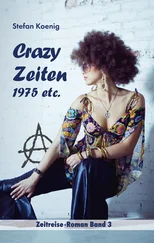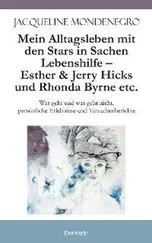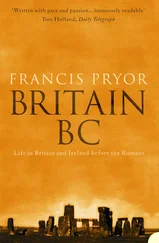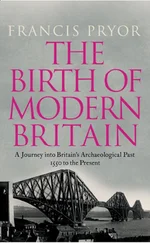Britain went to Crudgington. Past the aluminium and concrete shed that had incubated that impostor Lymeswold, they headed for the old stone farmhouse. On the distressed oak table in the kitchen they discovered cheesecloth and press. It was here that the country found the recipe for authenticity — a handful of heritage, a pinch of creativity and a dollop of craft. So the story has a happy ending. A lost art has been rediscovered, a tradition has been revived and a smile is being put back on the face of a nation that had almost forgotten how to say ‘cheese’.
In the run-up to his landslide election victory in 1997, Tony Blair’s pollsters warned him that his New Labour project risked being ‘outflanked on patriotism’. So, on the evening of 15 April, television viewers were shown a party election broadcast entitled British Spirit. Its star was a dog: Fitz the bulldog.
It was an audacious piece of casting. I met Fitz briefly as he was taken for ‘walkies’ in front of assembled photographers and TV cameras opposite the entrance to the Houses of Parliament during that campaign. The media was fascinated by the sheer nerve of Labour’s propaganda machine, brazenly commandeering the British bulldog for its own purposes.
Britain is fluent in dog. Each breed is imbued with characteristics of class and politics that are widely understood. The bulldog growls with Churchillian patriotism: pugnacious, loyal, courageous and determined. It is a dog of the traditional working-class right and, as pure-bred Fitz cocked his leg on a Westminster lamppost, we all knew Tony Blair was employing canine shorthand. The broadcast went down badly with some ethnic minorities who accused Labour of adopting a symbol of the British National Party, a tactic described in Australian political slang as ‘dog-whistling’ to racists. But the party’s senior spin doctor Peter Mandelson knew Fitz had done his job. ‘He is a completely New Labour dog,’ he told reporters.
If Tony Blair had turned up at an event with a Labradoodle at his side, it would have been translated as a worrying tendency towards Euro-federalism; a Golden retriever — a concession to Middle England; a Manchester terrier — an appeal to Labour’s industrial heartlands. Practical or sentimental, urban or rural, bourgeois or proletarian, gay or straight, conservative or progressive — all of these characteristics may be revealed by the breed at the end of the lead. Research suggests dogs really do look like their owners — one study found people able successfully to match pictures of owner and pet 64 per cent of the time. But in this country, a dog is also an expression of personality and lifestyle. It is a statement of identity.
To understand how Britain has become so adept at ‘reading’ dogs, one must follow the scent through history. In the Middle Ages, the breeding of a dog reflected the breeding of the master. Hunting with hounds was the pursuit of the ruling elite, an exclusive pastime that required large numbers of dogs bred for specific roles. Greyhounds and mastiffs, terriers and spaniels, the forerunners of foxhounds and bloodhounds: these prized possessions were often housed in purpose-built kennels with oak beds and staff to care for their needs. A nobleman’s dogs would probably be treated better than his servants. Indeed, being sent to the doghouse might have been regarded as a luxury break by some peasants.
The pure-bred animals were valuable status symbols and the nobility would go to great lengths to ensure peasant dogs didn’t dip a proletarian paw into the aristocratic gene pool. Local mongrels would sometimes be fitted with wooden contraptions designed to prevent cross-breeding, a practical form of eugenics maintaining the feudal divide.
Dogs had the cachet of designer labels, advertising the superior taste and pedigree of the owner. The most exclusive and expensive animals became both ostentatious displays of wealth and intimate companions, some invited into the home as pampered pets. The reputation of Britain as a nation of dog lovers, rather than simply dog owners, can be traced to the private chambers of the Tudor court. At one time, Mary Queen of Scots had twenty-two lapdogs, each dressed in blue velvet, dotted around her rooms. An eyewitness to her beheading recorded how ‘one of the executioners, pulling off her garters, espied her little dog which was crept under her cloths.’ The condemned woman had smuggled her favourite pet to the scaffold in her underwear, the lonely and terrifying walk to the block, one assumes, made marginally easier by the presence of a beloved puppy in her petticoat.
For centuries, dogs emphasised the feudal fault lines within British society: on one side, a peasant’s ferocious ratter; on the other, the squire’s thoroughbred hunter. Man and dog both had their place in the recognised hierarchy, but just to make sure neither the lower orders nor the growing middle classes developed ideas above their station, the Game Act of 1671 made it a criminal offence to keep hunting dogs for all but those who had inherited valuable estates or were heir apparent to the nobility. The landed gentry convinced Parliament to create a distinct canine class divide which, if crossed could result in a hefty fine or imprisonment. What kind of working dog you were allowed to own was not a matter of need nor even wealth, it was a question of land ownership.
The Game Act was justified as a measure to prevent poaching, but it was really about power and class. The aristocracy wanted to stop new money upsetting the old order and, by including petty rules about dog ownership, hoped to ensure the aspirational industrialists could only aspire so far. It didn’t last, of course. Money spoke. Rich cotton barons and ironmasters began buying up the estates and pumped millions into packs of foxhounds and gun dogs, determined to confer the ancient social status of hunting upon themselves. The aristocracy’s vain attempt to oust the arrivistes finally ended in 1831 with the passing of the Game Reform Act, which did away with many of the class-ridden regulations, including those relating to dog ownership.
There was some blue-blooded fury at how the new law would damage Britain’s traditional class structures now that ‘the blacksmith, the butcher, the hog jobber, the fisherman and the cadger… all have certificates’. A letter in New Sporting Magazine that winter despaired at a law which meant ‘all men shall be equally qualified to keep and use dogs’. This class battle, however, had been decided.
The wealthy middle classes had made their money in town but strove to be accepted in the countryside. They yearned to demonstrate they had mastered rural ways, that they had what it took to be fully fledged members of the landed gentry. An understanding of dogs and their breeding was a pre-requisite for such aristocratic pretensions, and so an industry developed to teach the bourgeoisie the secrets of the kennels. The Field magazine saw the new rich as its target market and one of its early editors, John Henry Walsh, used its pages to develop the association between well-bred people and well-bred pooches.
Writing under the pseudonym ‘Stonehenge’, Walsh imparted ancient wisdom, setting out the qualities of numerous dog types for the first time. He was a judge at the earliest recognised dog show, held in Newcastle in 1859, at which sixty pointers and setters were divided into categories and marked according to Walsh’s descriptions of perfection. From this, Walsh was instrumental in the foundation of The Kennel Club, the organisation that sets the rules and standards for every British pedigree dog to this day. He compiled his principles of breeding, ideas that echoed the importance society placed upon parentage. ‘Breeding in-and-in,’ Stonehenge stated solidly, ‘is not injurious to the dog, as may be proved from theory and practice; indeed it appears, on the contrary, to be very advantageous.’ The idea that inbreeding could produce a flawless purity seemed eminently plausible in the evolution revolution that followed the publication of Charles Darwin’s On the Origin of Species. It also played to the prejudices of a country which had long assumed that ancestry begat status, that blood dictated class.
Читать дальше












